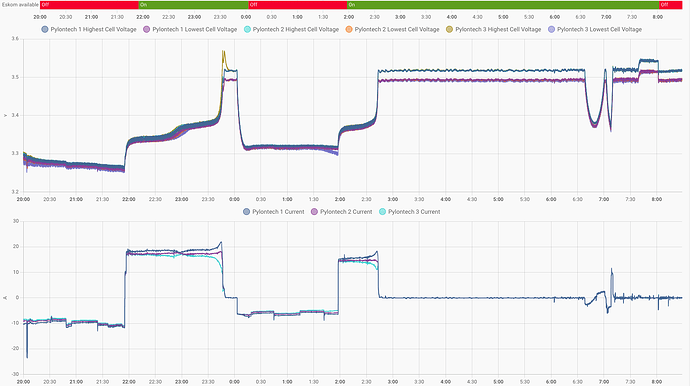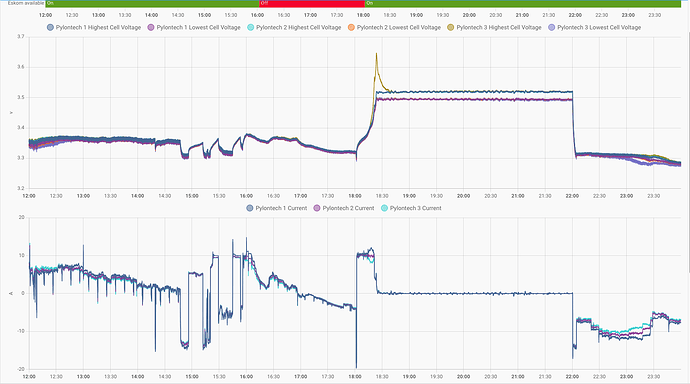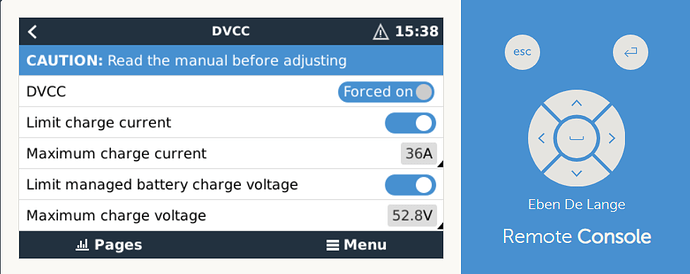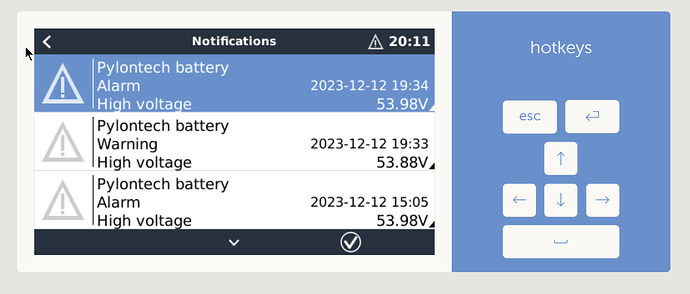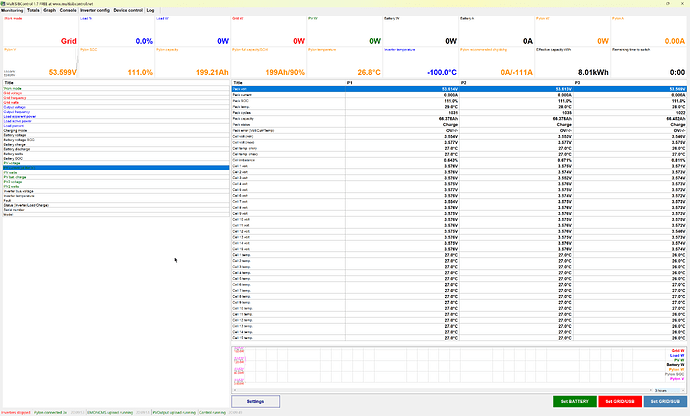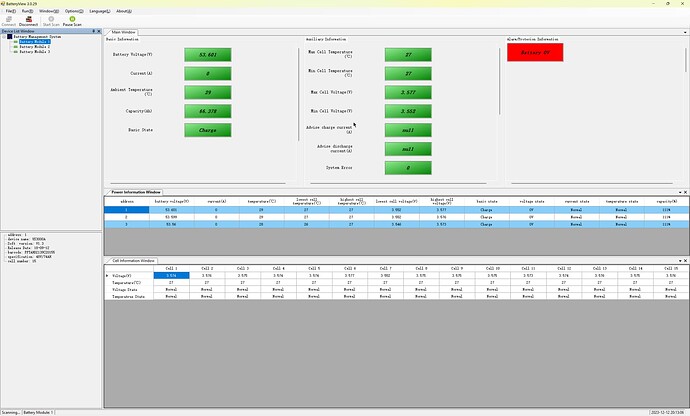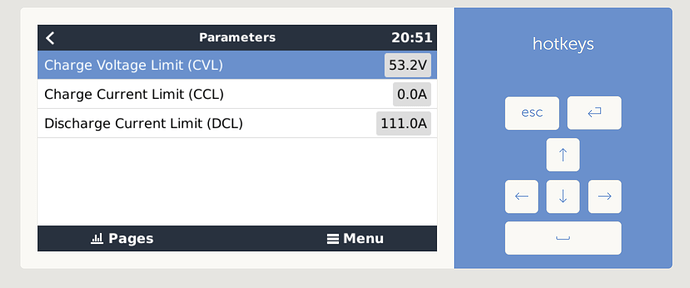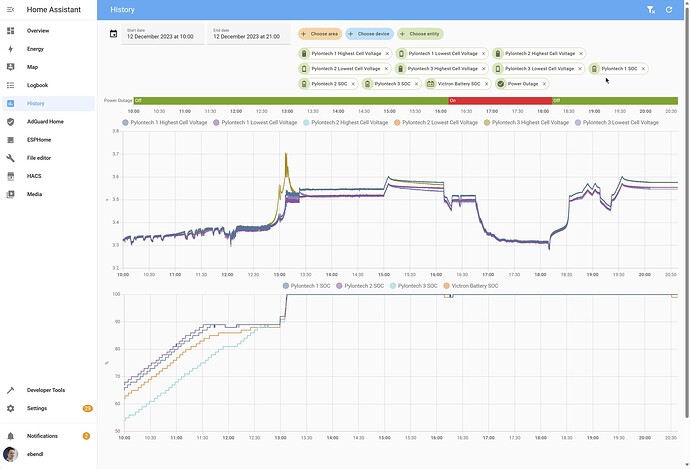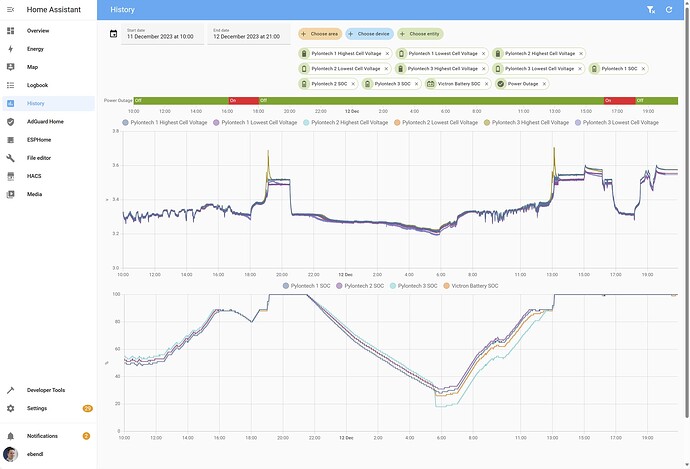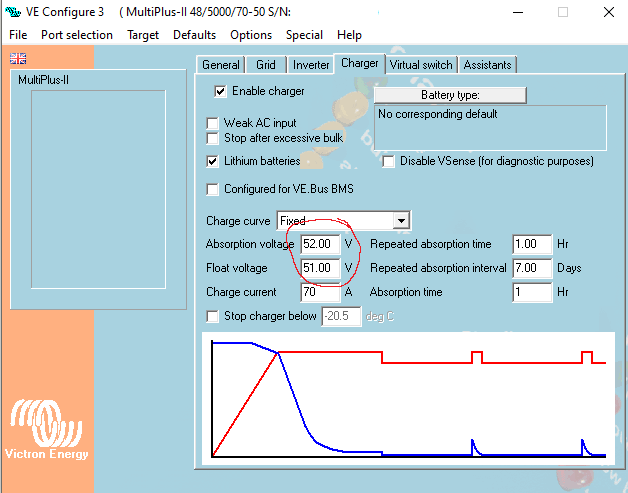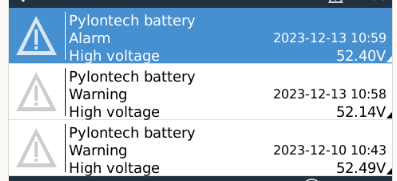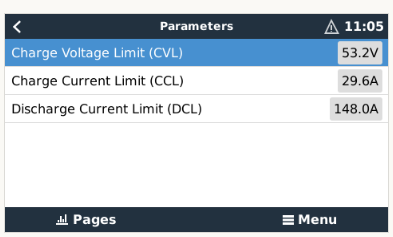I’m beginning to think this might be something else.
Simply this: When you’re running grid-parallel (ie with ESS), you should think of the battery as being connected to the grid in parallel. Of course not literally, there are a few components in the middle to regulate things, but in essence.
If the grid voltage goes up… so does the battery. If the grid voltage drops down, so does the battery. Of course with a ratio of about 4:1 or thereabouts, constantly adjusted as the multi tries to regulate the battery voltage.
Same happens if the frequency fluctuates, if the PLC in the Multi lags behind, the voltage technically leads and energy flows into the battery, and the other way around, energy flows out of the battery.
The multi constantly tries to regulate this, but the process is not symmetric. Sometimes more energy slips in than what slips out.
If you have the “Feed excess DC coupled PV” setting on, then the energy slips out easily. The Multi is programmed to do it.
If that setting is off, then this is of course not allowed, and things become grossly asymmetric.
This issue is relatively rare. It only affects places where the batteries are not cycled, or where the grid voltage is not stable. I’ve seen a handful of cases where a large PV-inverter pushing against a thin cable to the utility pushed the utility voltage up by 5V every time the sun emerged from behind a cloud… that was quite funny as well.
In any case. Something needs to be done to allow that energy to slip out again. Literally allow it to slosh back into the grid in small amounts.
The symptoms: You’ll see a gradual increase in voltage over the long term. The current reported by the multi will be an average of zero, but you’ll see it swing up to a few amps, then negative a few amps, in a cycle.
I’m actually talking to the firmware guy about this since yesterday. And maybe this has just become urgent enough to deal with it now. I may ask you later if I can test a solution at your site.
![]()

